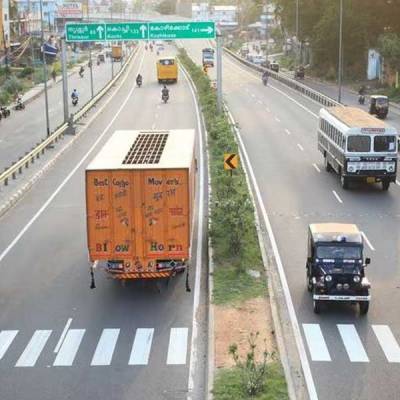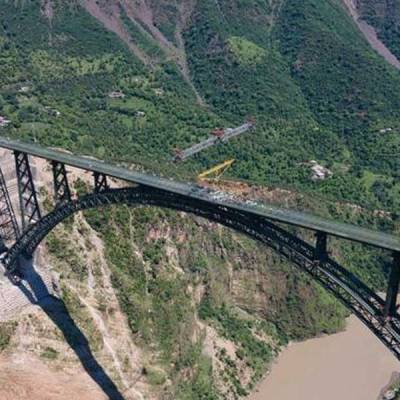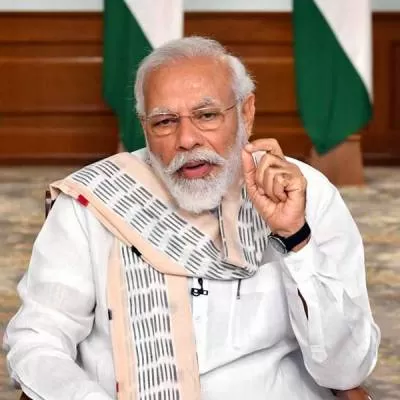- Home
- Infrastructure Urban
- ECONOMY & POLICY
- Centre to ask States to build wide pavements
Centre to ask States to build wide pavements
State governments in the country would be asked by the Centre to implement a law and set aside a part of their budgets to ensure wide, unbroken and obstacle-free pavements, like in Kolkata, for safe movement of pedestrians. The Union Urban Development Ministry is drafting a circular that will soon be sent to all the states, asking them to fix a certain percentage of road space for pedestrians’ pathways.
They must also earmark a sum in their budgets for pedestrians’ facilities. A recent study by the NGO Shakti Sustainable Energy Foundation, conducted across 28 Indian cities including Howrah, has revealed that 12 do not have a policy for pedestrians and therefore spare no thought for them. Most Indian cities feature pavements with trees planted bang in the middle, sewer lines bisecting them or electric poles blocking pedestrians’ way. That is, if encroachers or stacked building material allow the pedestrians access to the pavement in the first place. Every year, 1.6 lakh pedestrians are killed on Indian roads because all our planning is oriented towards car users. Our planning is always aimed at increasing the speed of private vehicles, said SK Lohia, officer on special duty with the ministry. The other problem is of generalists handling complicated issues of urban planning.
The study notes that in the 28 cities interviewed, civil engineers handle all transport-related activities in the majority of the cities and only two cities had a transport planner, the study notes. In Brazil’s cities, the width of pedestrians’ pathways and cycle tracks are fixed.
Every new construction, including road widening or redevelopment of residential or commercial spaces, has to abide by these rules. Colombia has even specified the construction material to be used for pavements and cycle tracks.
A team of urban development ministry officials had gone on a week’s visit to these two countries to study their pedestrian laws. The ministry will ask cities to come up with street design guidelines, including details about where a pedestrian crossing should be or what the height of a median should be. The design must have details of essential street furniture such as benches and signage.
State governments in the country would be asked by the Centre to implement a law and set aside a part of their budgets to ensure wide, unbroken and obstacle-free pavements, like in Kolkata, for safe movement of pedestrians. The Union Urban Development Ministry is drafting a circular that will soon be sent to all the states, asking them to fix a certain percentage of road space for pedestrians’ pathways. They must also earmark a sum in their budgets for pedestrians’ facilities. A recent study by the NGO Shakti Sustainable Energy Foundation, conducted across 28 Indian cities including Howrah, has revealed that 12 do not have a policy for pedestrians and therefore spare no thought for them. Most Indian cities feature pavements with trees planted bang in the middle, sewer lines bisecting them or electric poles blocking pedestrians’ way. That is, if encroachers or stacked building material allow the pedestrians access to the pavement in the first place. Every year, 1.6 lakh pedestrians are killed on Indian roads because all our planning is oriented towards car users. Our planning is always aimed at increasing the speed of private vehicles, said SK Lohia, officer on special duty with the ministry. The other problem is of generalists handling complicated issues of urban planning. The study notes that in the 28 cities interviewed, civil engineers handle all transport-related activities in the majority of the cities and only two cities had a transport planner, the study notes. In Brazil’s cities, the width of pedestrians’ pathways and cycle tracks are fixed. Every new construction, including road widening or redevelopment of residential or commercial spaces, has to abide by these rules. Colombia has even specified the construction material to be used for pavements and cycle tracks. A team of urban development ministry officials had gone on a week’s visit to these two countries to study their pedestrian laws. The ministry will ask cities to come up with street design guidelines, including details about where a pedestrian crossing should be or what the height of a median should be. The design must have details of essential street furniture such as benches and signage.






















